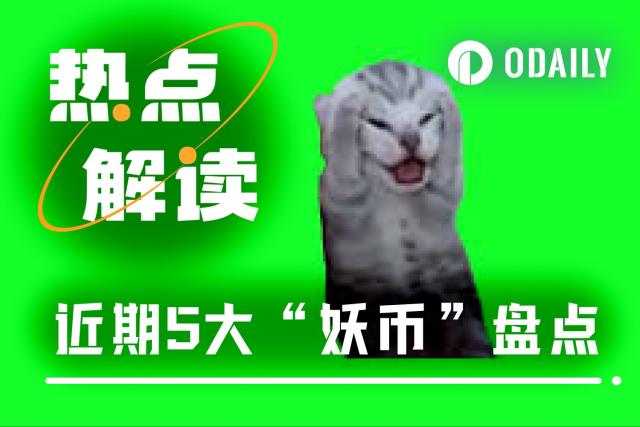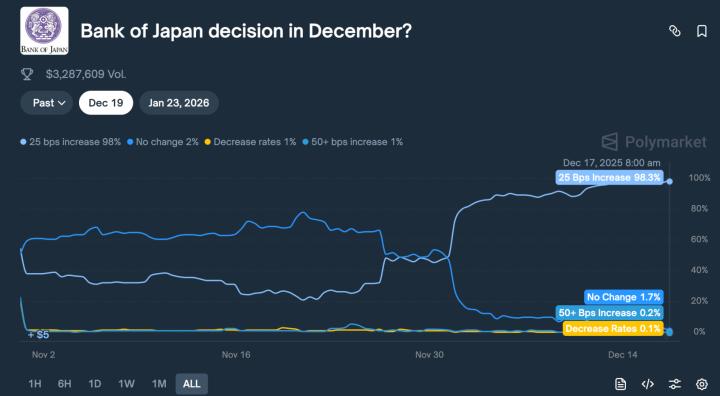
Original: ArringtonCapital
Compiled by: Yuliya, PANews
On February 8, 2025, the AO mainnet is set to launch, a significant milestone for the AI and crypto communities. AO aims to provide a highly parallel computing layer for agent applications, with the Arweave permanent data storage network playing a crucial role. This article will delve into Arweave's permanent storage architecture, AO's superparallel computing model, and how they are driving the future of on-chain autonomous agents. It will also explore the challenges, market dynamics, and participation opportunities for AR and AO.
Arweave Overview
Arweave is a decentralized, permanent data storage network. Users pay a one-time fee to obtain permanent data storage services. Unlike other storage networks (such as Filecoin) that require ongoing fee payments, Arweave employs a unique block structure called "blockweave." Each new block links not only to the previous block but also randomly to earlier historical blocks, ensuring miners must hold the complete historical data to generate new blocks, thereby achieving long-term data preservation.
Arweave's native token AR is used to pay for storage fees and reward miners. When users upload new data and pay the fee, approximately 85% of the tokens are deposited into a fund for future miner rewards. This design ensures that miner incentives are decoupled from user activity, strengthening confidence in the permanent storage of data.
Growth Trajectory
Since its launch in June 2018, Arweave's usage has seen significant growth in 2021. The chart below tracks weekly data uploads since the network's inception:

Data storage reached a peak in September 2021 and bottomed out in June 2023, before steadily rising again. The chart below breaks down the monthly data uploads by type.

Arweave usage over time (by size)
In 2021, the rise of Non-Fungible Tokens (NFTs) drove the first significant surge in Arweave's data storage demand. Creators began uploading JPEGs and images to Arweave instead of relying on centralized hosting services, a trend that led to a spike in Arweave's usage. Due to its permanence and decentralized nature, Arweave became the ideal choice for storing NFT artwork data.
Since 2023, a series of new use cases have emerged. Across all categories, applications have occupied the most storage space. These are primarily bundler applications that package multiple transactions and data and publish them to Arweave. These include Bundlr (the team has since rebranded to Irys.xyz, and in addition to the bundler app, they will also launch their own data chain) and Ardrive Turbo. The data packages from these applications may have previously been classified as images, videos, or other blockchain data. In addition to these bundler apps, other projects are leveraging Arweave's permanent storage capabilities, including the social app Hey by Lens, the content publishing platform Mirror, and the AI application Ritual.
In terms of transaction volume, while Arweave charges fees based on the size of stored data, the growing use cases with increasing transaction counts may indicate the future direction of Arweave's development.

Arweave usage over time (by transaction count)
The transaction data shows that the two fastest-growing use cases in the blockchain ecosystem are Redstone and AO.
- Redstone
Redstone is one of the fastest-growing oracle networks in the crypto space, providing price data for various assets across all major EVM chains. The network's rapid growth is attributed to its expanding partner relationships and product functionalities.
- AO
AO is a parallel computing and agent messaging layer built on top of Arweave. Although still in the testnet phase, its mainnet is planned for launch in February 2025. AO's design aims to provide efficient computing infrastructure for agent applications, leveraging Arweave's permanent storage capabilities to support on-chain autonomous agents.
Criticisms of Arweave
While Arweave's storage model has been recognized, it also faces some criticisms, particularly regarding its relatively low fee revenue. The following chart compares the price-to-earnings (P/E) ratios of different blockchains:

In terms of the price-to-fee ratio, Arweave's performance is only better than Avalanche among L1 chains. The lower ratio indicates that users are paying higher fees relative to the network's fully diluted value (FDV). These data reflect the total fees generated but do not account for miner payouts or Arweave's donation fund contributions. Since Arweave allocates a larger portion of fees to miners, its short-term profitability may appear smaller compared to other chains.
AR Token Performance
In 2024, following the announcement of the AO project, AR experienced significant growth. After the announcement, the Arweave token price surged from less than $10 to over $40. The market showed strong interest in the potential that AO could bring to the crypto ecosystem and the expected increase in Arweave activity.
Since February 2024, AR holders have been able to accrue AO tokens by holding AR in their wallets. Currently, 33% of newly minted AO tokens are being distributed to holders, and these tokens will be unlocked for transfer when the AO mainnet launches in February 2025.
After the mainnet launch, AR holders will continue to receive one-third of the AO token issuance until the 2.1 million AO token creation cap is reached. These rewards are calculated every five minutes, with a monthly rate of 1.425% of the remaining supply, meaning the token issuance will decrease over time.

AR Price (USD)
Amid the overall market downturn, AR's price has also declined during the summer. Compared to tokens with AI-related value attributes, such as RENDER, TAO, and NEAR, AR has relatively underperformed. On-chain capital flows may be a significant factor contributing to this phenomenon.
Since September 2024, the market has observed a large holder consistently selling a substantial amount of AR tokens. The identity of this investor is not yet confirmed, but there are clues. The wallet address dRFuVE-s6-TgmykU4Zqn246AR2PIsf3HhBhZ0t5-WXE acquired over 10 million AR tokens (out of a total supply of less than 66 million) in November 2021. The wallet had transfer records as early as 2023 and still held 5 million tokens (worth around $80 million at $16 per token) by 2024.
On September 6th, this wallet transferred the remaining 5 million tokens to two new addresses. These addresses subsequently transferred the tokens to exchanges, indicating they are likely market maker addresses. Of the 5 million tokens, approximately 1.35 million remain in the suspected market maker addresses, awaiting transfer to exchanges.
The behavior of the two addresses transferring to the same target exchange addresses suggests that this is likely a single market maker operation. This wave of selling pressure accounts for a significant portion of the circulating supply, exceeding 7% of the total AR tokens.Market analysis suggests that once the remaining tokens are sold, the downward pressure on the AR market may be alleviated.
AO Overview
AO is a decentralized "superparallel" network that breaks through traditional limitations on the scale and types of on-chain computations, while maintaining the verifiability of all operations. The core of AO is a message-passing layer that supports independent and parallel processes, leveraging Arweave's permanent data storage to ensure that all updates and interactions are permanently recorded.
"AO" stands for "Actor Oriented," where developers can build modular programs (actors) that each choose their own virtual machine (VM), consensus mechanism, and payment model, while communicating with other actors through standardized message formats. This design allows cloud-based applications (like Amazon EC2) to integrate with AO's decentralized network and collaborate with decentralized smart contracts to achieve their goals.
AO Feature Highlights
- Existing Applications
Some AO agents have already been deployed. For example, one agent can continuously optimize the yields of crypto assets across multiple lending protocols; another agent can automatically execute dollar-cost averaging strategies on DEXs based on user-defined parameters. These agents leverage Trusted Execution Environments (TEEs) to protect user privacy, allowing users to custody their own private keys and operate fully autonomously without additional instructions.
- Self-Awakening Capability
Unlike other Layer1s, AO's programs can "self-awaken" without external triggers. This design supports fully autonomous services. For example, a yield optimization agent can reallocate assets to higher-yielding strategies while users are asleep, without manual intervention.
AO Architecture
1. Processes:
Processes are individual "actors" on AO, starting from an initial state and recording all received messages. Data is stored on Arweave to ensure it is never lost or censored. By separating data recording from actual computation, AO can handle larger tasks than typical blockchains.
2. Messages:
Messages are the way processes and users interact, transmitted over the network and carrying unique IDs for traceability. Message delivery must be correct to be accepted, providing flexibility for traffic control while ensuring messages are permanently recorded.
3. Scheduler Units:
Scheduler Units add incremental time slot numbers to messages and ensure they are uploaded to Arweave, maintaining a consistent record of the message sequence. They can be centralized or decentralized depending on the use case requirements.
4. Compute Units:
Compute Units are responsible for the actual execution of processes, freely choosing which processes to compute, forming a competitive market for computation services. After completing their work, they return signed proofs of the process state changes.
5. Messenger Units:
Messenger Units are responsible for message transmission across the network, ensuring messages are recorded on Arweave by the Scheduler Units and then delivered to the Compute Units until all operations are complete.
Challenges Facing AO
The AO project faces several critical challenges. Each network ultimately needs to establish dominance in one or two vertical domains. For example, Arbitrum has focused on DeFi, Solana has excelled in Meme coins and DePIN, and IMX has focused on gaming. Arweave has been centered around content storage, blockchain archiving, and the permanence of oracle data. AO aims to redefine decentralized content and DeFi, particularly in driving the adoption of AI agents in the DeFi space.
1. Adoption Challenge in DeFi
While AO is committed to integrating DeFi and AI, the adoption of AI agents in DeFi has been slow, with no breakthrough applications yet. The closest attempts have been to incorporate machine learning models on-chain for yield optimization. However, these models are typically simple, mainly used for yield prediction and strategy switching cost comparison. In contrast, large language models have highly nonlinear and nondeterministic characteristics, and still face challenges in basic computations.
2. Non-DeFi Chain Background
Arweave is not a traditional DeFi-focused public chain, and past attempts to build DEXs on it have not been successful. Therefore, AO needs to attract Arweave's existing community and new user groups. The team's token economics design reflects a deep understanding of this challenge, such as rewarding users who bridge DAI and stETH to attract capital. Currently, AO's TVL has reached $578 million, and maintaining the activity of this capital is crucial.
Token Economics and Participation
After the mainnet launch in February 2025, anyone can contribute computing resources or deploy their own processes and agents. Cross-chain bridges will be opened, allowing the transfer of any token to the AO network. As more people join and develop advanced AI or automation services, AO's decentralized and efficient architecture will unlock new possibilities in domains requiring trust and high computational power.
Airdrop Mechanism
- Token Supply and Release Plan: The total supply of AO tokens is 21 million, with a pre-set halving release schedule.
- Airdrop Eligibility: AR holders will receive AO airdrops proportional to their holdings; users who bridge DAI and stETH will also be eligible for allocations.
- Distribution Method: Since February 27, 2024, 1.03 million AO tokens have been distributed to holders and bridgers; AR holdings are sampled every 5 minutes to calculate the distribution ratio.
Participation Options
- Hold AR Tokens: One-third of newly issued AO tokens are allocated to AR holders
- Bridge DAI or stETH: Currently, two-thirds of AO tokens are allocated to cross-chain users
- Use AO Mainnet Applications: Multiple trading and lending platforms will be available after mainnet launch
- Provide Computing Resources: Anyone can contribute computing power to the various processes on AO without permission
*Disclaimer: The author Arrington Capital is an early investor in Arweave and holds AR and AO tokens.







